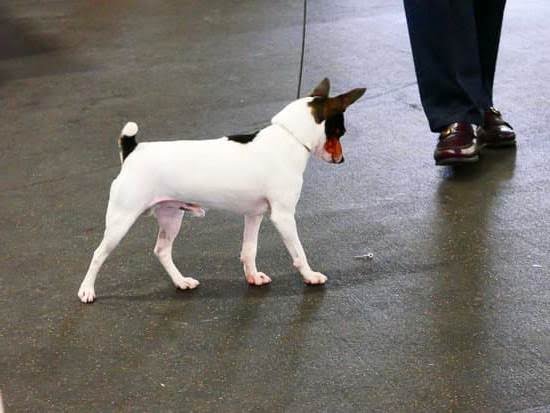Introduction
Teaching your dog the give paw command provides many simple and heartwarming benefits. First, it’s an effective obedience trick for basic commands. It can also help to keep your pup occupied when there is nothing else to do, preventing boredom and unwanted behaviors. Finally, showing the give paw trick to friends and family can be a great way of demonstrating how intelligent your pup is. By investing a bit of time and patience into teaching the command, you’ll be rewarded with both entertaining tricks and a better behaved pet as well.
Materials You’ll Need
Training your dog to give its paw is a fun and simple task. To get started, you will need the following materials:
Treats — Choose high-value treats that your pup loves and find a container or treat pouch to store them in.
Clicker — A clicker can provide audio feedback for your pup’s behavior that can make training easier.
Leash — A leash makes it easier to redirect your dog if he starts getting distracted during the training session.
Tug Toy — Using a tug toy as reward instead of treats can be helpful in keeping your pup engaged and motivated during training.
Patience — Patience, consistency, and positive reinforcement are key when it comes to teaching any new trick!
Step-by-Step Guide to Teaching the Give Paw Command
1. Get some treats: Before beginning the training process, it’s important to have a few treats on hand as part of your reward system. Have some small, tasty treats ready that your pup will love and be excited to receive.
2. Give the cue: As with all commands, use verbal cues when giving the paw command. Say “paw” or “give me your paw” in a clear and distinct voice so your pup knows what you want them to do.
3. Show them what to do: When you say the “paw” cue, show your pup how to give you their paw by gently holding their paws in yours and moving their front paw into a ‘shake hands’ position. Now hold the treat near the paw to encourage them to keep it up for longer periods of time.
4. Offer rewards for success: Once your pup has given you their paw and is holding it in place properly, offer verbal encouragement as well as rewards in the form of treats or affectionate pats on their head or body (whichever they prefer). Positive reinforcement like this helps imprint the command in memory more effectively than any punishment-based system would.
5. Repeat: Reinforce the paw command multiple times before ending each practice session with lots of rewards and praise for getting it right most typically works best with dogs who are easily distracted by tastes, scents, and other noise around them; repetition is key here!
6. Increase complexity gradually: As your pup becomes more proficient at giving its paw after hearing the command cue, start increasing complexity by asking for two or three paws at once rather than just one – this works better if you start from scratch each time rather than expecting too much too soon from them. Make sure to reward successes frequently along this journey so that they know how proud you are of them and continue using positive reinforcement methods over punishment-based ones for faster results!
Understand the Acoustic Cue
Training your dog to give its paw is a fun exercise that will ensure good manners. For this training technique, you need to have some patience and consistency before you can start having successful results with your pooch.
First, it’s important to understand the acoustic cue of what sound you make when giving the cue or command. This means understanding the difference in sound between verbal and nonverbal queues. You may want to say “Give me your paw,” but this command can be easily misinterpreted by your pet as something that sounds similar to another cue they’ve already been trained on, leading to confusion and frustration. Therefore, it’s best to provide a consistent sound that is clear every time you give the command – such as a clicker or whistle – rather than relying solely on saying it aloud each time. This creates clarity in the sound so that your pup knows exactly what you’re asking without any doubt. Additionally, try not to change up the sound of your command each time since this could lead to further confusion for your dog.
Preparing Your Dog with Hand Targeting
To train your dog to give its paw, it is important to first teach them how to establish a connection with you. Start by offering your hand as a target for them to touch. Position your hand slightly above the nose and make sure that your fingertips are touching the bridge of their nose. Offer gentle positive reinforcement when they touch the target, such as verbal praise, light physical petting or treats. Do this several times per day for several weeks until you notice your dog voluntarily reaching out for you when you offer your hand. Once this connection has been established, it will be much easier and faster to teach them new commands like ‘give paw’.
Introducing the Verbal Cue ‘Give Paw’
Before you begin to train your dog to give its paw, it is important that you differentiate between a verbal cue and a non-verbal cue. A verbal cue is when you say something to tell your dog what behavior to engage in, such as saying “Give Paw” when asking the dog to raise its paw. A non-verbal cue is an action such as lifting the paw away from the ground or pointing at it with your finger. Both types of cues can be used together, but it is important that your pup knows which one you are using in each instance.
Once you have identified which cues you plan on using for this behavior, take some time to reinforce each one independently so that your pup learns their meaning. Start by showing the non-verbal cue, like holding out your hand and lifting up your pup’s paw, and then reward him with a treat or praise once he acknowledges the task. Repeat this several times before moving onto verbal reward reinforcement. Now start emphasizing the verbal cue by saying “Give Paw” each time after showing the gesture and rewarding him when he finishes the task correctly. Continue doing this until he has mastered responding to both types of cues.
Encouraging Your Dog to Respond
When you want to train your dog to give its paw, it’s important to show genuine excitement when it responds positively. This will create positive reinforcement in the dog’s mind and make them more likely to repeat the action. You can do this by praising your dog with a treat or petting their favorite spot whenever they perform the desired behavior. If you are consistently enthusiastic about when your pup gives its paw, it will become a natural reaction for them to repeat the action. Additionally, avoid scolding or punishing your dog if they don’t respond as desired. This could have an opposite effect of teaching your pup that giving its paw is a negative experience that should be avoided rather than encouraged. Stick with positive reinforcement and your pup will soon learn and recognize the feeling of success when doing what you ask of them!
Rewards for a Job Well Done
With the right forms of rewards and consistency, training your dog to give its paw will become a simple task. Using rewards properly is crucial in reinforcing the desired behavior. After all, who doesn’t like treats for doing something well?
It’s important to provide reinforcement in the form of a variety of different reward types: praise, food, toys, or anything else you know your dog loves. Positive words such as “good boy/girl” can also be included in order to better communicate with your furry friend. Not only will these reinforcements make training more effective and efficient, but it ensures that your pup is more willing and excited to learn new tricks.
Food can be one of the most appealing types of reward as dogs have a natural attraction towards food – an excellent choice for teaching basic commands. When working on anything from shaking hands to learning how to stay, always make sure pups are provided with plenty of treats! You can also invest in long-lasting toys that can provide entertainment for extended periods of time; a small investment with big returns when it comes to stress relief for dogs during isolated moments.
Be sure to use all these rewards with moderation; keep things consistent so that your pup really knows what he/she did right each time they complete a task correctly. Varying up the amount treat-wise and overall reinforcement efforts makes training easy and fun while keeping them eager and interested in their performance while they learn better behaviors!
Common Mistakes to Avoid
When training your dog to give its paw, it is important to focus on positive reinforcement instead of any type of physical punishment. Providing your pup with rewards every time they get it right can go a long way in motivating them to keep trying. Don’t be too quick to switch commands that your furry friend has already mastered; instead, ensure they understand it perfectly before moving onto the next steps. Training in small chunks at first will help your pup familiarize itself with the concept and make further progress easier. It is also vital to remain consistent whenever you are teaching your pooch how to give its paw; if you change up the process often or take a break for a few days, the chances of them getting confused are greater. Be patient and don’t rush through; remember that some dogs learn faster than others, so going at their pace will benefit both parties in the long run. Finally, maintaining eye contact with your pup throughout the process can create an even stronger connection between you two and make it easier for them to pick up new tricks.
Conclusion
Training your dog to give its paw is a great way to build a strong bond between you and your pup. Developing a relationship based on trust and respect can help improve communication, as well as create memorable moments and teach your pup valuable lessons throughout the process. Make sure that you don’t rush the training – remember that patience goes a long way in any kind of dog training. Use positive reinforcement methods such as treats or verbal praises while training your pup and make sure that the environment is calm and distraction-free so they can focus solely on being trained. If things start to get difficult, take a break and come back later when both you and your dog are feeling more relaxed and motivated. Ultimately, with lots of practice, dedication and plenty of rewards – both for yourself and for your pup – teaching your pet to respond to the ‘give paw’ command should become relatively easy over time. Once mastered, this trick is not only aesthetically pleasing but it serves as an incredible testament to the strong relationship between human-dog companions; one which will certainly bring joy for many years ahead!

Welcome to the blog! I am a professional dog trainer and have been working with dogs for many years. In this blog, I will be discussing various topics related to dog training, including tips, tricks, and advice. I hope you find this information helpful and informative. Thanks for reading!





